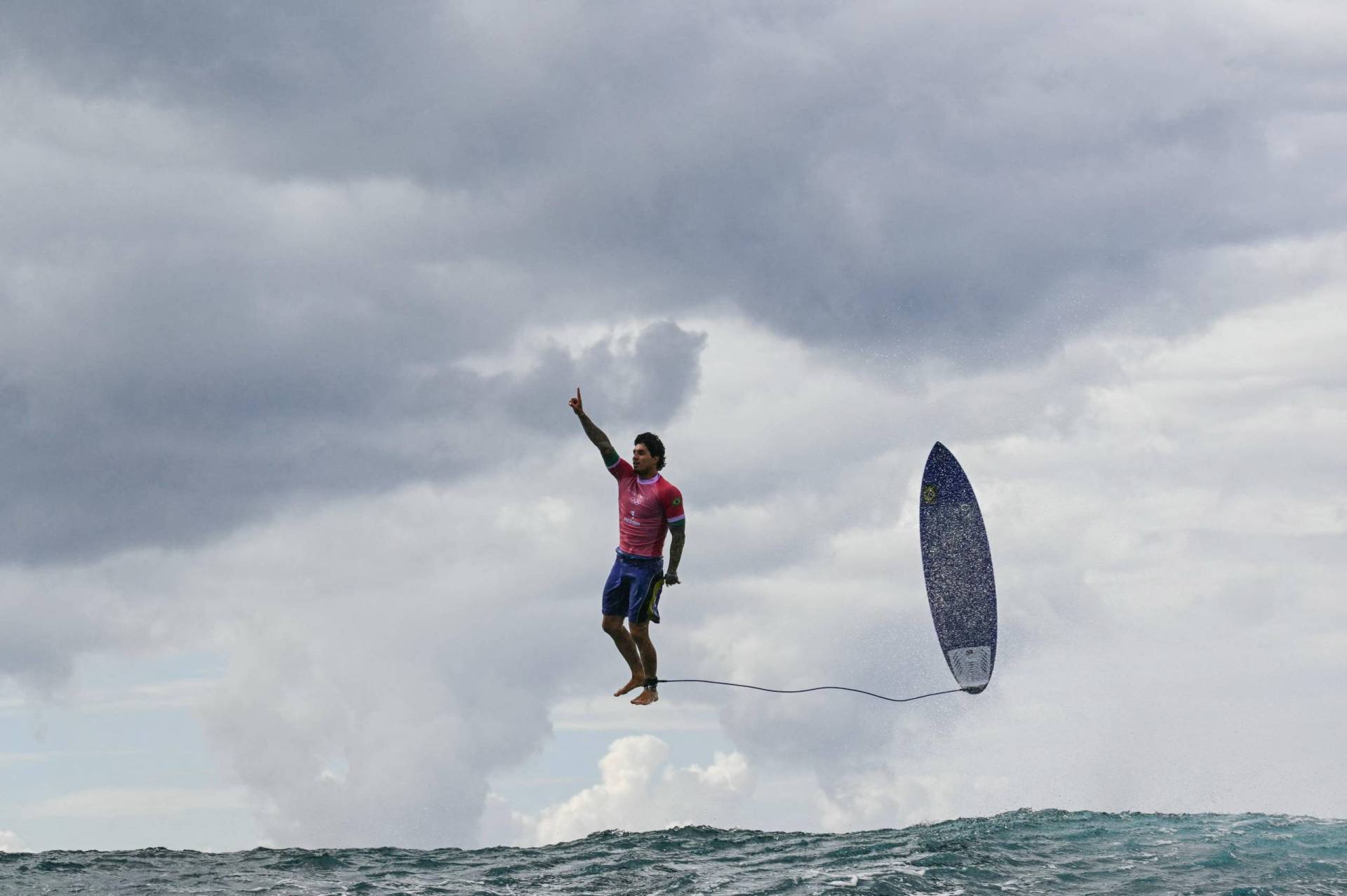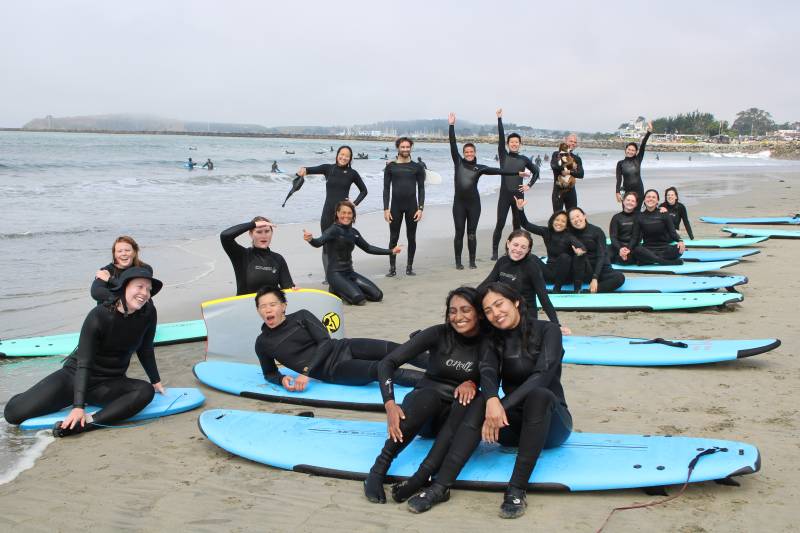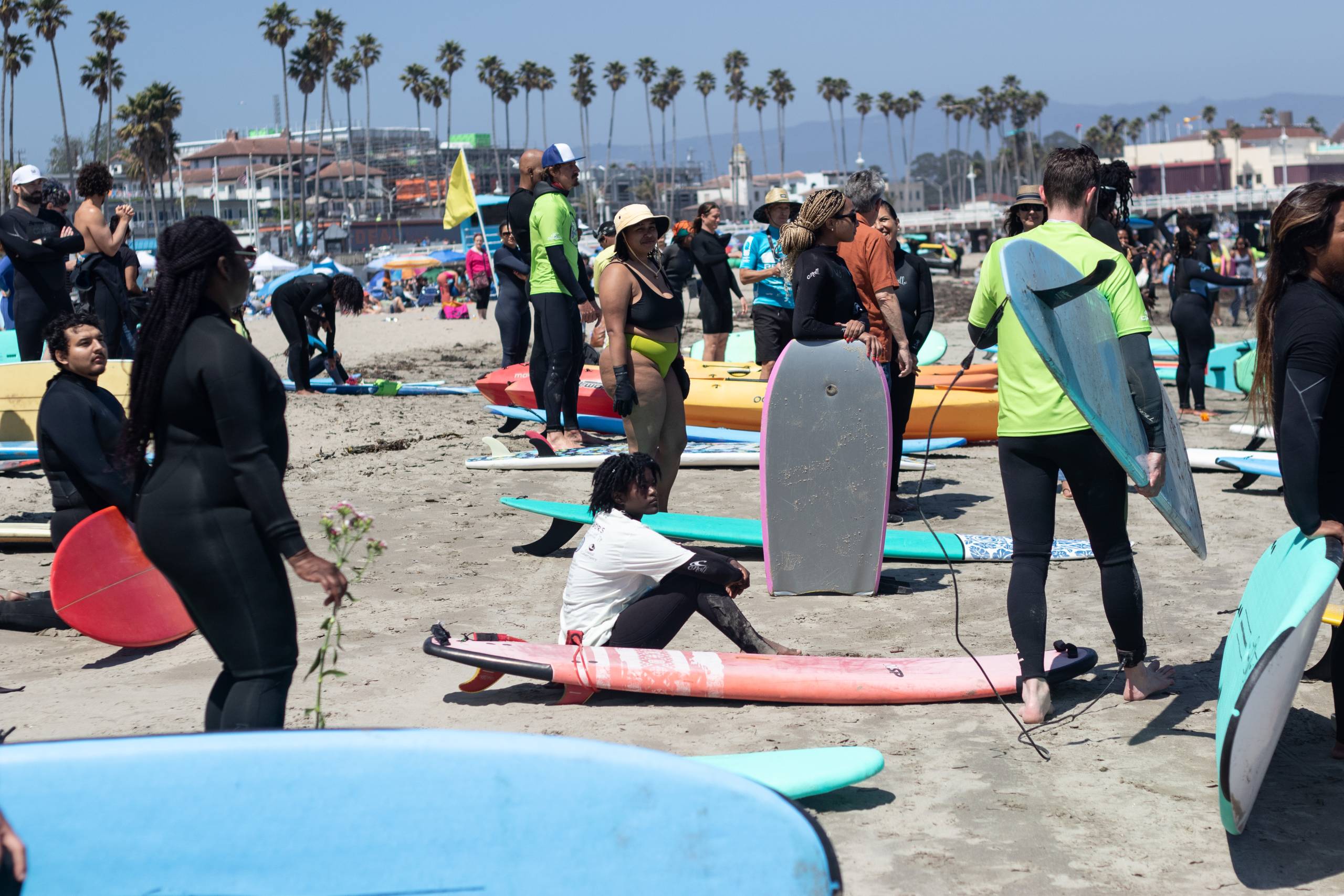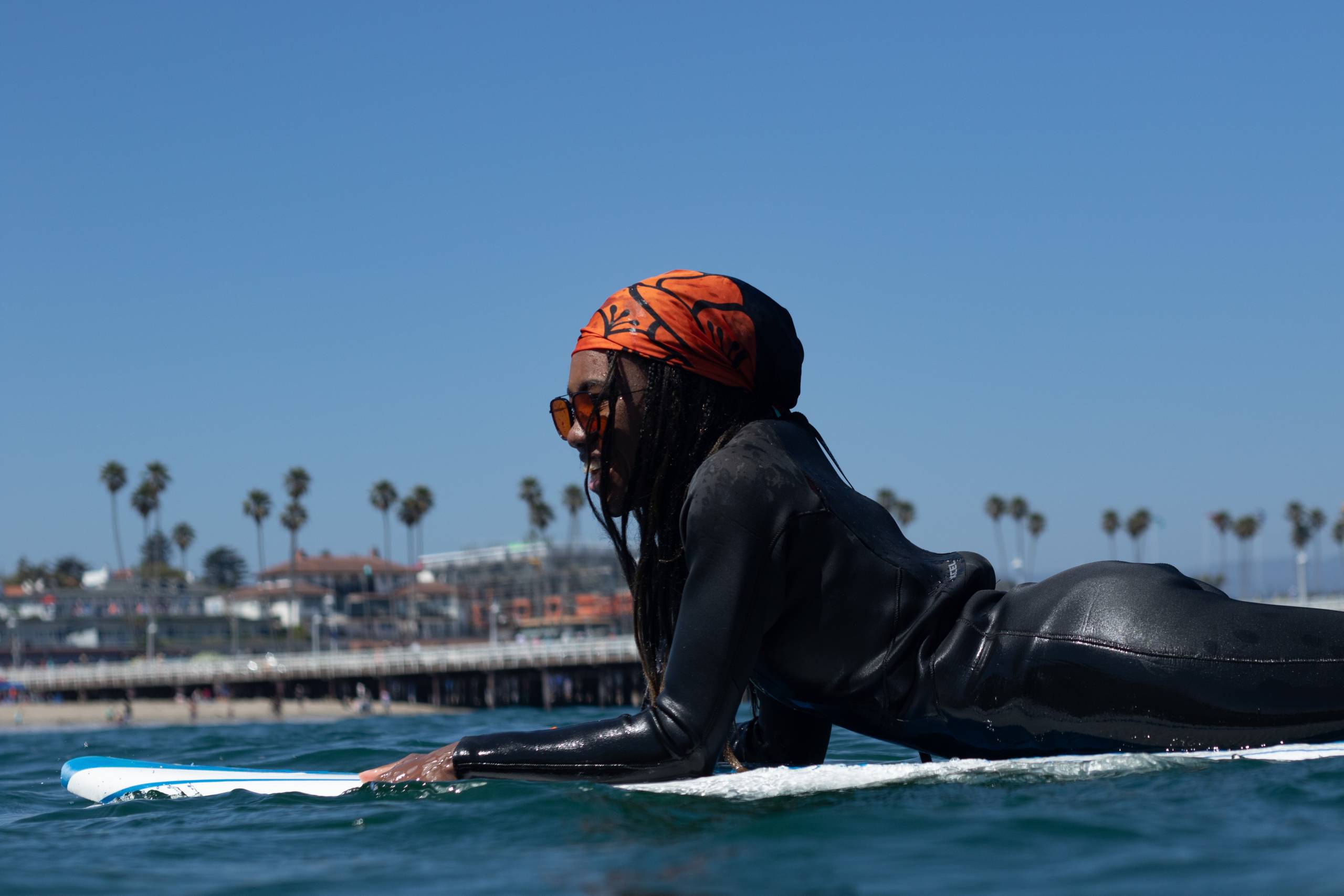A photo of three-time world champion Brazilian surfer Gabriel Medina — seemingly floating over the Pacific waters of Teahupo’o, Tahiti, surfboard suspended vertically mid-air — is being hailed as the defining image of the 2024 Olympics.
If this awe-inspiring competition is making you curious about surfing, you don’t have to be a world-class athlete or venture into the waters of Teahupo’o (called the “wall of skulls” for its dangers) to try the sport.

Jump straight to:
- Which Bay Area beaches are beginner-friendly?
- How do I find my first wetsuit and surfboard?
- What surfing terms should I know?
- Where can I find surf lessons near me?
- How safe is surfing?
- Where can I find a surfing crew?
The benefits of taking up surfing
Surfing can be tailored to different experience levels and athletic abilities and has many mental and physical benefits. There’s nothing quite like feeling fully present in your body as you navigate waves; the exhilaration of the ocean pushing you; and the camaraderie of cheering on friends — even when someone wipes out.
“What surfing really embodies for me is just play,” says Lia Posatiere, head coach at City Surf Project, which offers free surf lessons to youth at 16 San Francisco high schools and after-school programs. “It’s a unique way to channel your inner child and observe emotions that come up and let them go with the ocean.”
“You’re out there with the fish and the dolphins and the birds,” says Kyla Langen of Queer Surf, which offers sliding-scale lessons to LGBTQIA adults. “You’re among the life cycle and the food chain, just communing with nature. It’s lovely.”

Though many still imagine the stereotypical surfer as a bleach-blond white dude, the practice of riding waves has roots in Polynesia, South America and West Africa going back centuries and even millennia. “So a lot of people, we watch them come to our programs and express that it felt like a homecoming,” says Esabella Bonner, founder of Black Surf Santa Cruz, a group that offers free lessons and fellowship for surfers of color. “They realize that our space is in the ocean.”
Despite its reputation for cold weather and challenging conditions, the Bay Area is home to plenty of beginner-friendly surf spots, meetups and organizations striving to make the waves inclusive. So, if you’d like to learn how to surf, read on for essential tips for trying it for the first time.
How athletic do I need to be to surf, anyway?
You don’t have to be a championship swimmer to get out into the ocean. Decent swimming skills and the ability to tread water will do.
“You’re in a wetsuit, which is a flotation device. You usually have a surfboard, which is a flotation device,” says Langen, who spent 12 years as a pro surfer. “And a great place to start is in super close, where you can touch [the bottom].”
“Just starting really slow is key,” they add.
Surfing uses much of the same upper-body and ab strength as yoga. If you feel comfortable doing the cobra and warrior poses, you most likely already have the strength required to pop up on your board (more on that later).

Where are the best places to learn to surf in the Bay Area?
Just south of San Francisco, Pacifica is home to popular beginner surfing spot Linda Mar (in front of what is perhaps the world’s most scenic Taco Bell).
Bolinas Beach in Marin County is also a popular beginner spot, as is Cowell Beach in Santa Cruz. Both of these tend to have warmer conditions than Pacifica, although they are further away from the Bay Area’s urban centers.
All three of these beaches have nearby surf shops where you can rent boards and wetsuits before hitting the water.
Do I really need a wetsuit?
Wearing a wetsuit when surfing in Northern California is essential. In addition to your wetsuit being your “floatation device,” as Langen says, local beaches can be quite chilly the majority of the year. Pacifica, for example, is typically enveloped in a blanket of fog and temperatures rarely reach above 66 degrees, even when heat waves scorch the rest of the Bay Area.
But with a wetsuit, surfing in the summer feels plenty warm, and it’s pretty doable even in the winter. Wetsuits work by trapping a layer of water between your skin and the suit’s neoprene material. Your body heats the trapped water, keeping you toasty throughout your session. Wetsuits come in different thicknesses, but a 4/3 millimeter suit will do you right year-round in the Bay Area.
Booties will definitely add to your comfort level: They not only keep your feet warm but also protect them from rocks. Some surfers also wear neoprene hoods and gloves during the winter months.
Surf shops typically offer wetsuits for rent (but not booties or hoods — those must be purchased). Many shops will offer you space to shower and change. Otherwise, surfers typically change by their cars under towels and surf ponchos.

What kind of surfboard should I get as a beginner?
When it comes to boards, beginners typically start on eight and 9-foot foam boards. These are wide, buoyant and sturdy, and much better for balance than shorter, narrower and harder fiberglass boards.
You can, of course, rent your surfboard from a surf shop, which can also advise you on things like sizing. Queer Surf occasionally hosts garage sales where people can buy used gear on a sliding scale, as does City Surf. Both groups typically announce these on their Instagram pages.
Facebook Marketplace and Craigslist are also reliable sources for cheap used gear. Another handy tip: if you rent a wetsuit and like the fit, check the brand’s website around Black Friday, Fourth of July and other major holidays — they might have a sale.






